For years, Blake Jamieson was known for bold stencil portraits of iconic athletes—works collected by legends and printed on trading cards seen around the world. But ask him today where his art lives, and he might point not to a gallery or a studio, but to a lush California garden behind his family’s old barn.
Today, we’re excited to share the story behind Blake’s newly available model on TITLES, his journey as an artist, and how he’s been exploring new frontiers.
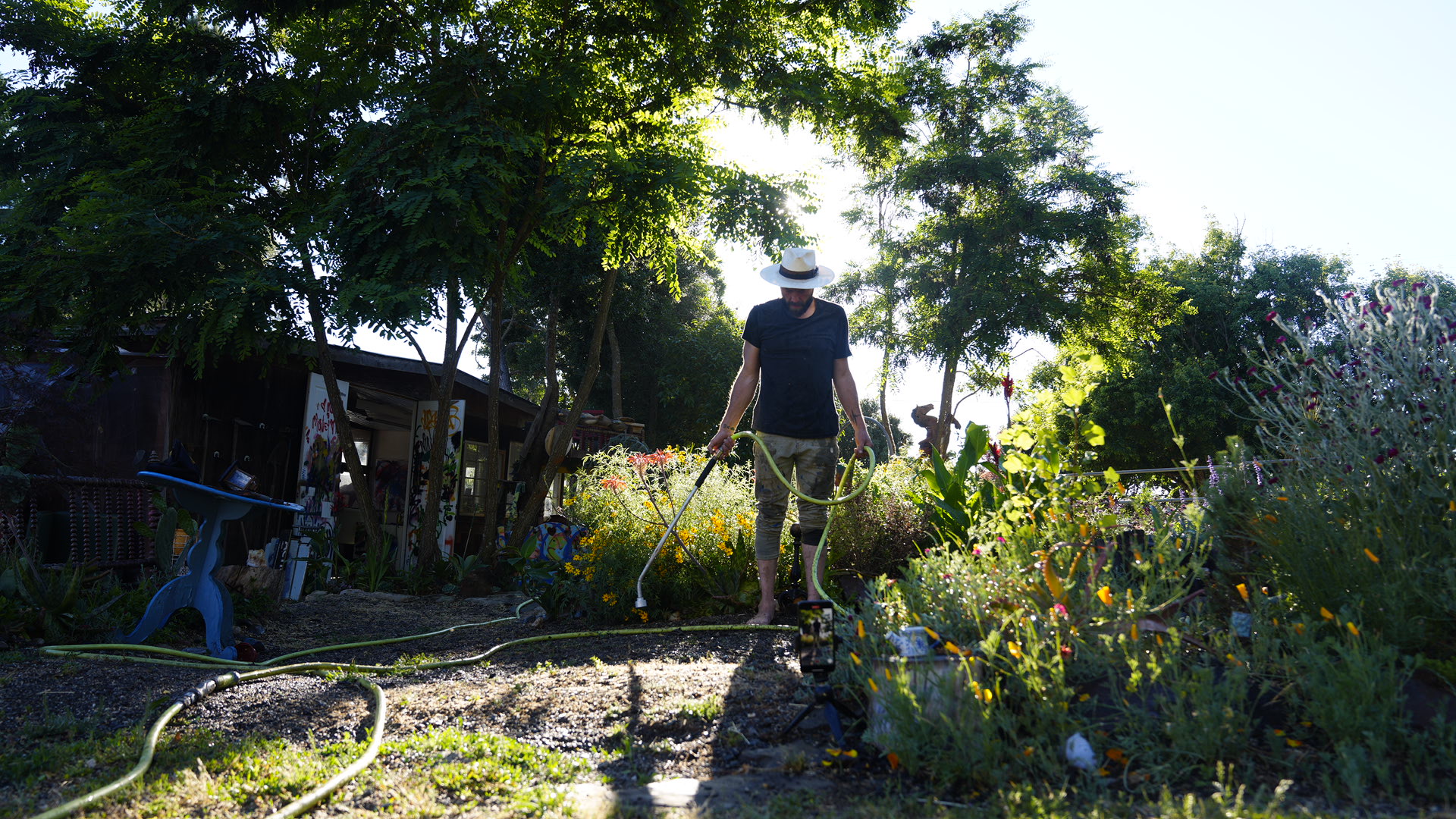
From Marketing to Magic: Blake’s Origin Story
Before Blake became a full-time artist, he was cutting stencils in a barn, fresh out of a marketing job, still sorting through what would come next. After a formative trip to Barcelona, where he immersed himself in street art and eventually read The Alchemist by Paulo Coelho on the plane ride home, he returned to California with a conviction: “I love painting. I can do this.”
That moment set everything in motion. He dove straight in, calling out working on a Muhammad Ali portrait cut from foam core in 2012, wasn’t technically perfect, but it marked a turning point. That DIY spirit carried him through long nights at FedEx printing stencils, painting side-by-side with friends like pro kite surfer Gretta Kruesi, and gradually developing a portrait style that became unmistakably his.
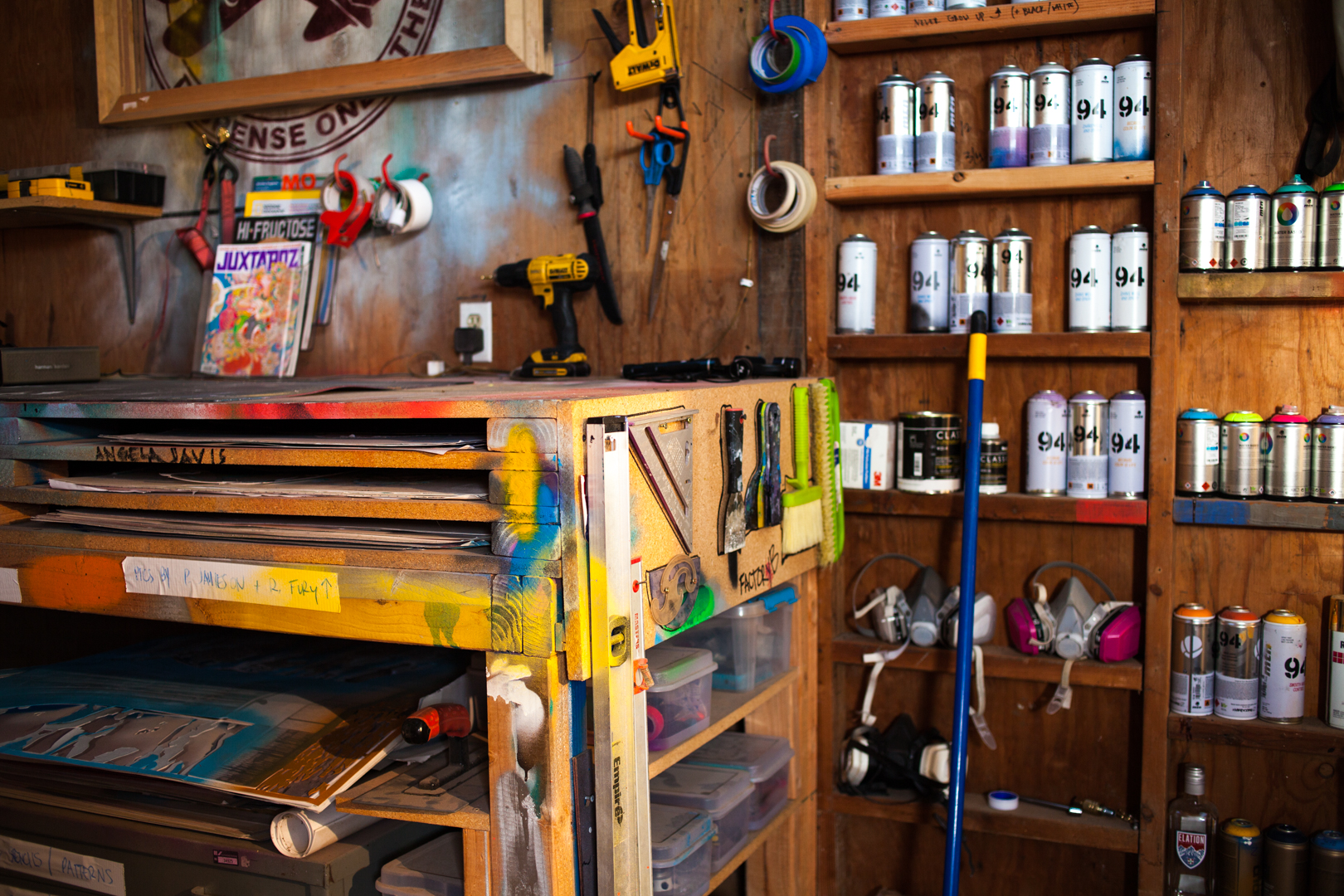
“I’ve definitely spent over 10,000 hours in that barn, just cutting stencils and listening to audiobooks,” he says. “The Alchemist became a kind of blueprint. I listened to it hundreds of times while I worked.”
Athlete Portraits and the Art of Collaboration
Blake’s career took off when he began creating and gifting portraits to professional athletes. At the center of each portrait was a new relationship with the subject. They were a collaboration of a different kind, even when the subjects didn’t know they were collaborators just yet.
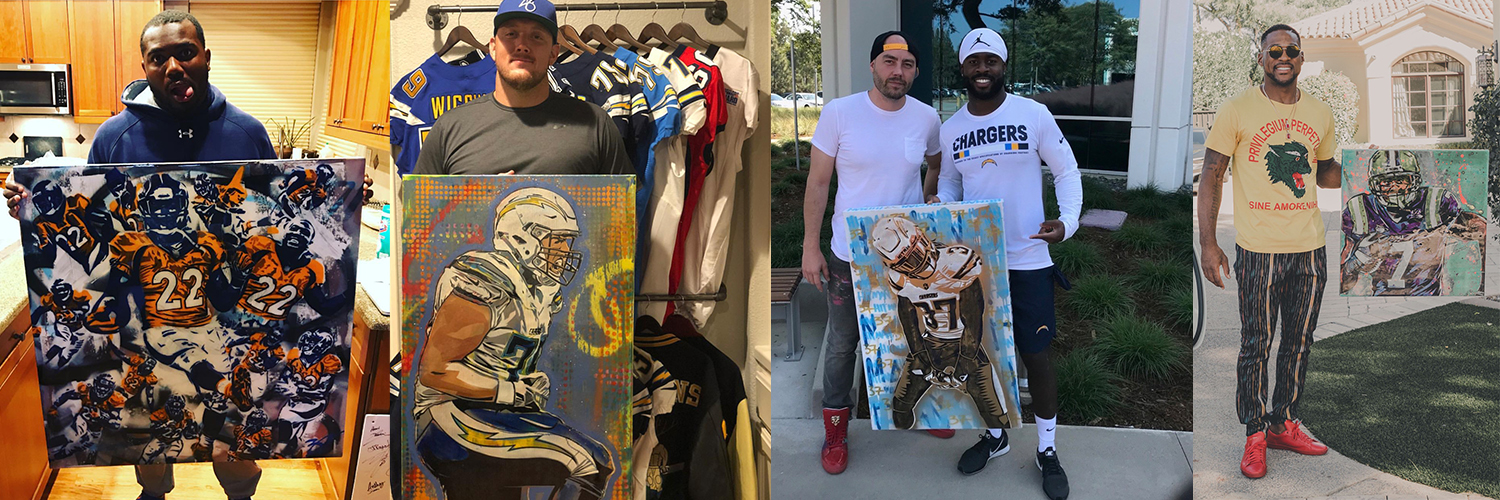
“I was basically choosing athletes, painting them, and gifting it to them,” he explains. “In a way, all of my portraits are collaborations. Even if I never talk to them, it’s still a relationship—still a loop I’m closing.”
Those portraits became a calling card, opening doors to commissions, press, and eventually a high-profile partnership with Topps trading cards. When he moved to New York City, he went all-in on the sports. Nonstop painting in his studio and a life in full sprint.
“New York was the most intensely commercial stretch of my life,” Blake says. “I wanted to make the most of being there, so I just shot my shot.”
That meant long days painting, often locked in his studio for hours. During the pandemic, when isolation became the norm, Blake poured himself into his work. With galleries closed and in-person events on pause, he turned his studio into a hybrid space. Part studio, part jungle with hundreds of plants, a sign of what was to come.
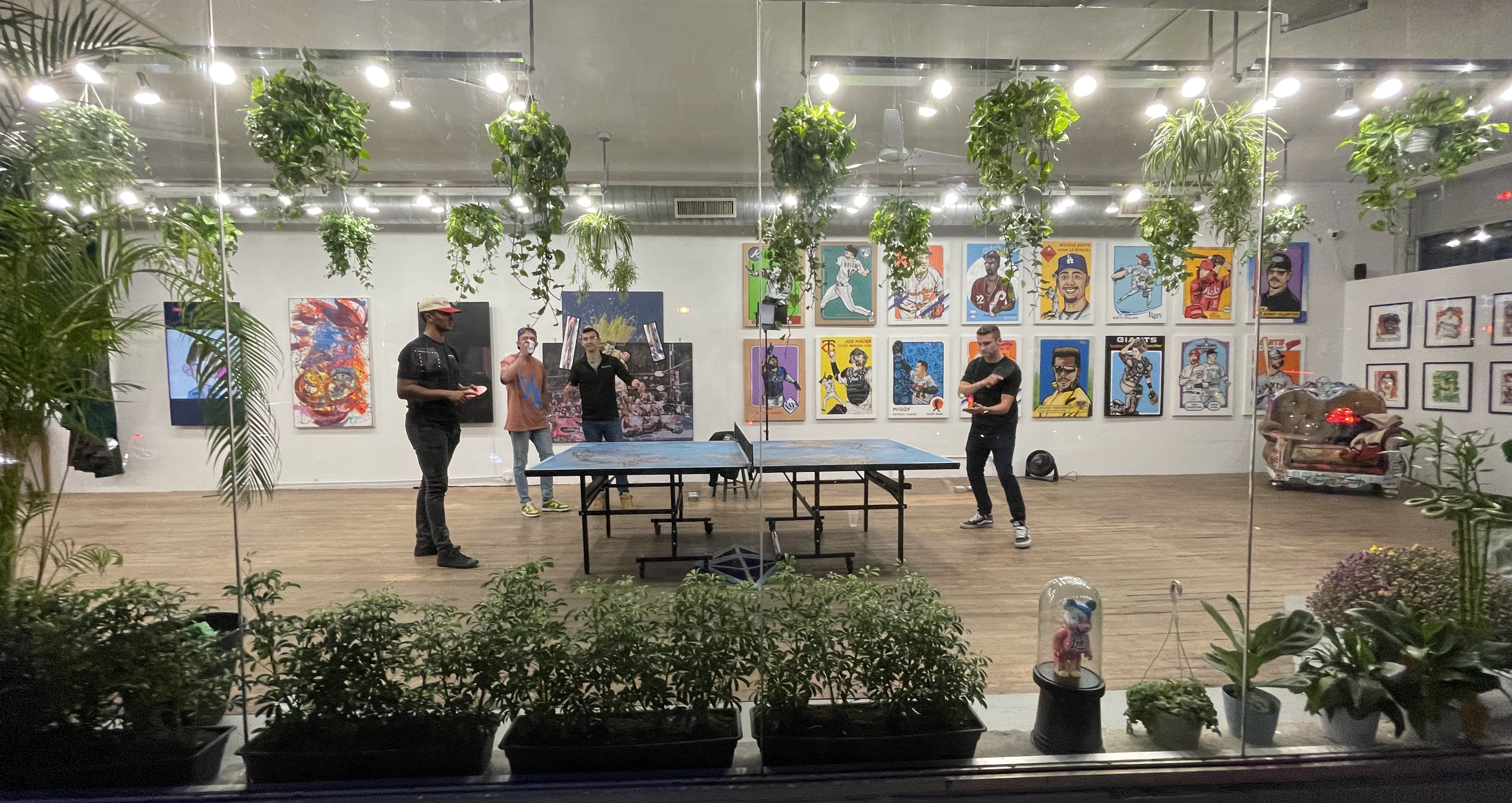
The city also taught him about audience. While commissions and partnerships grew, so did the pressure to keep up. Not every piece came from a place of inspiration. Sometimes it came from the demands of the market.
“I was buying the nicest paints, the best canvases, and chasing results,” he reflects. “Looking back, I think I could’ve made the same art for years with cheaper materials. But I thought I had to ‘level up.’ That was the New York headspace.”
It’s an experience that sharpened his craft but also set the stage for a big change. After four years, Blake left the city and returned to the barn where it all started, ready to redefine what success meant on his own terms.
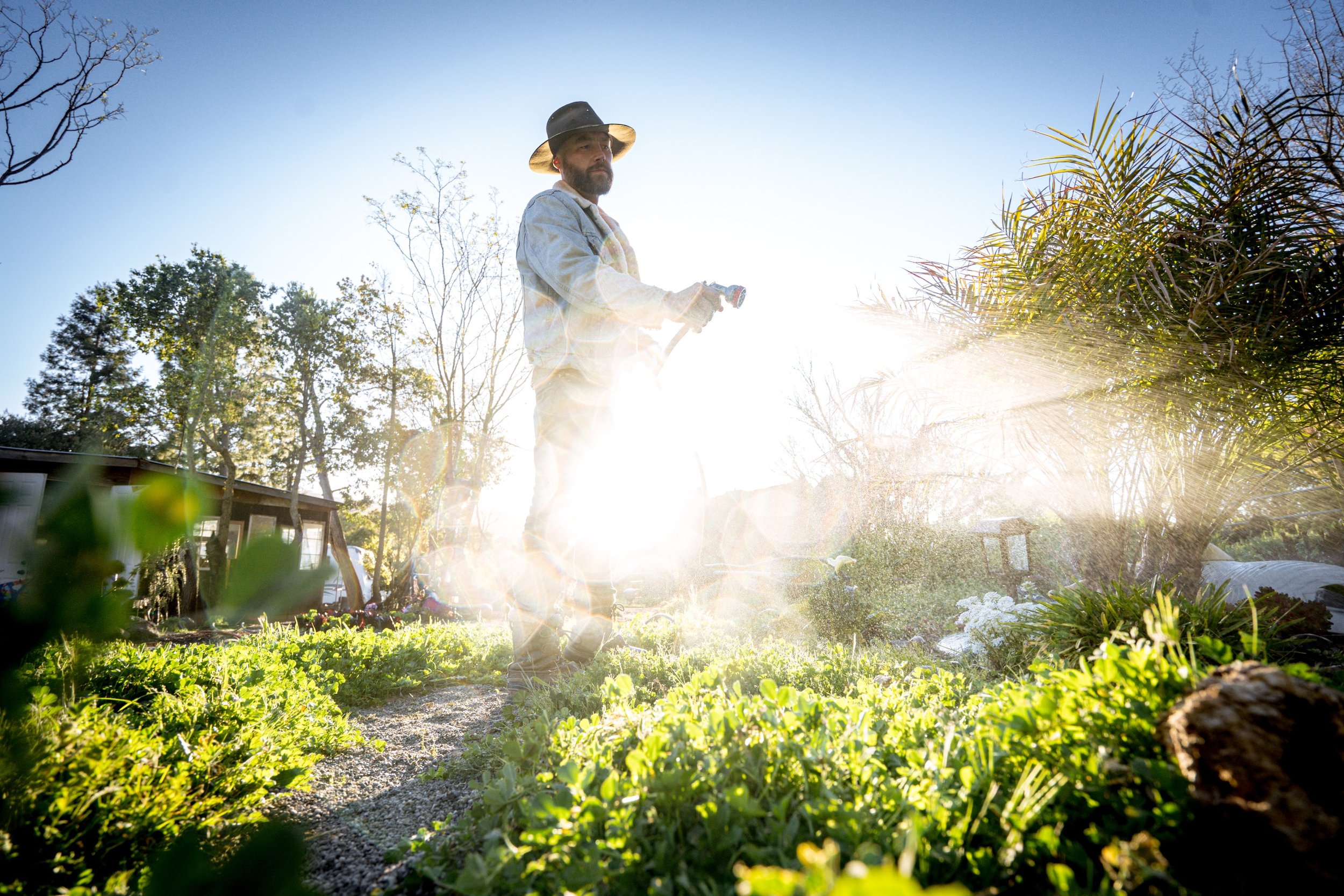
Back to the Barn: Finding Flow in the Garden
Trading street noise for soil. The barn where he first cut stencils is now his painting studio again. The horse pasture has been transformed into garden beds. What started as caring for houseplants during COVID has blossomed into a regenerative food forest.
“When I moved back, I didn’t plan to stay long. But then Spook, the horse I grew up with, passed away—and for the first time in 50 years, the land was open.”
What began as houseplants became full garden beds. Then trees. Then a vision.
“I’m trying to feed my tribe,” Blake says. “If I had it my way, I wouldn’t eat anything I didn’t grow.”
Gardening, like art, is a creative act. It’s just one that unfolds more slowly. It taught him to prepare the soil the same way he once prepped canvases.
“It’s the pendulum swing from trying to monetize everything in New York,” he reflects. “Now, this garden is about patience and experimentation. It’s not commercial. And that purity is part of why I love it.”
Enter TITLES, Making Art Accessible for Everyone
Blake’s newly available TITLES model isn’t just a retrospective. It’s an invitation. We worked with Blake to custom train his model on a number of his sports portraits works. The model captures his work but most importantly, to Blake, it opens up accessibility for others and across dimensions.
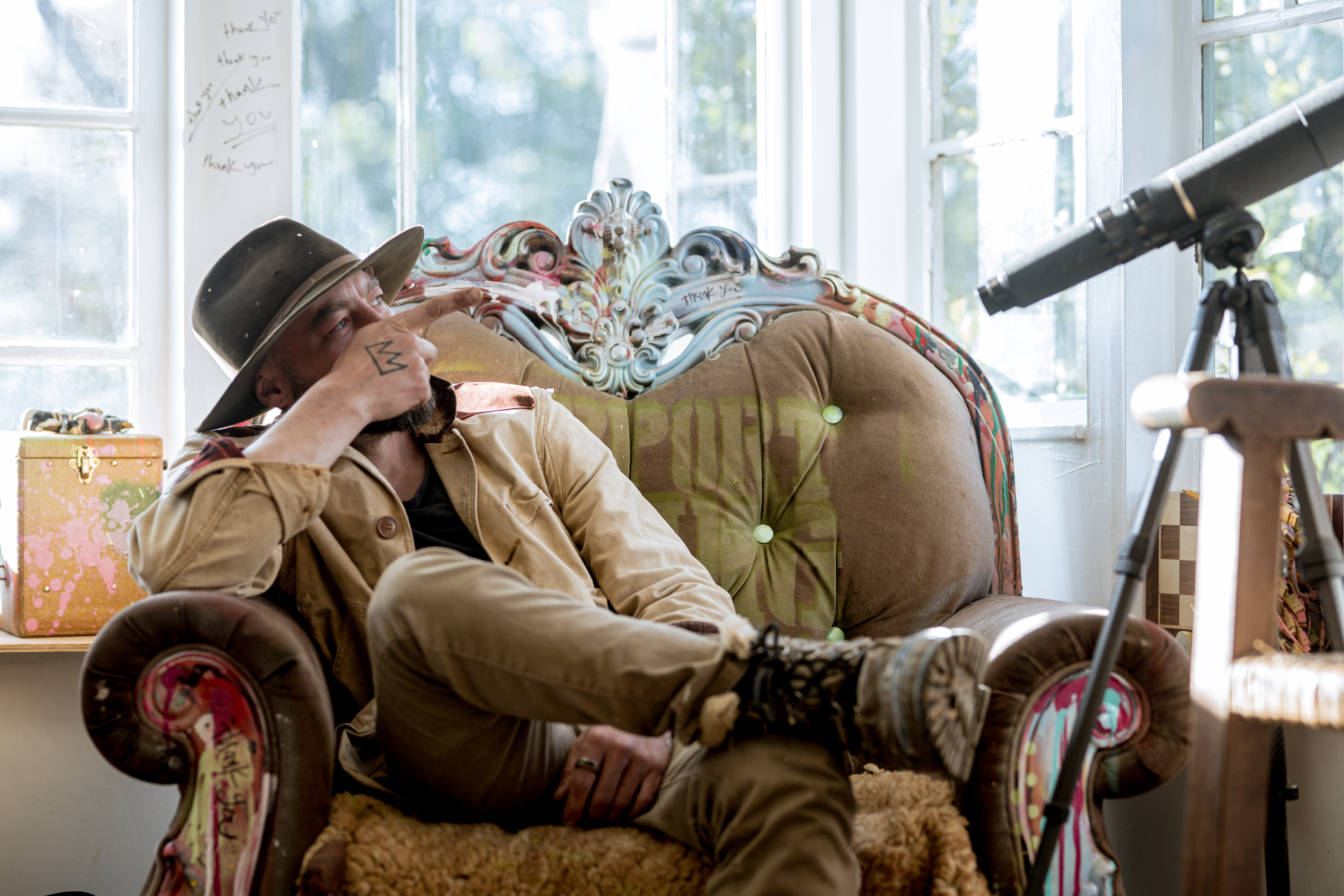
“It opens up a new ocean of access,” Blake explains. “I love the idea that you could create a special piece of art that I had a hand in, for fractions of a penny. That’s just a different ocean.”
For Blake, AI offers a way to extend his creative practice across time. While many view AI as inherently extractive, he sees it as an opportunity to breathe new life into his body of work.
“If a model was trained based on what I’ve done over and over again, and it doesn’t get tired… that feels like time travel.”
Create your own sports portrait on TITLES—rooted in Blake’s legacy, here.
Future Harvest
The time to refresh in his garden coupled with the emergence of a suite of new AI tools has opened a series of new explorations. Blake’s now exploring new mediums that blend AI imagery, fiction writing, and possibly short films or games.
“I always thought I’d write fiction someday. Now I think: what if it’s also a short film, a game, an NFT collection? Why not all of it?”
On the commercial art front, Blake is working on a project with Yahoo!’s 28 Days of Fantasy, which will pay homage to his work in sports art, combined with influences from the latest garden.
From his early stencil portraits, time in the Topps spotlight, to his regenerative garden and emerging world-building project. His work continues to ask what it means to create with care, patience, and imagination. We’re proud to be working with Blake on his new model on TITLES, and even more excited to see what you create through his lens. Follow Blake on Instagram and Twitter, and try out his model on TITLES, here.
“The future of art isn’t one thing. It’s a garden. You plant ideas, see what grows—some right away, some years later. But they’re all part of the same loop.”
Closing
We’re so excited to see what each of you dream up with Blake’s model. If you enjoyed learning more about Blake’s story and what’s next for him. Please take a moment to follow him on Twitter, Instagram, and TITLES.
Much love,
- TITLES